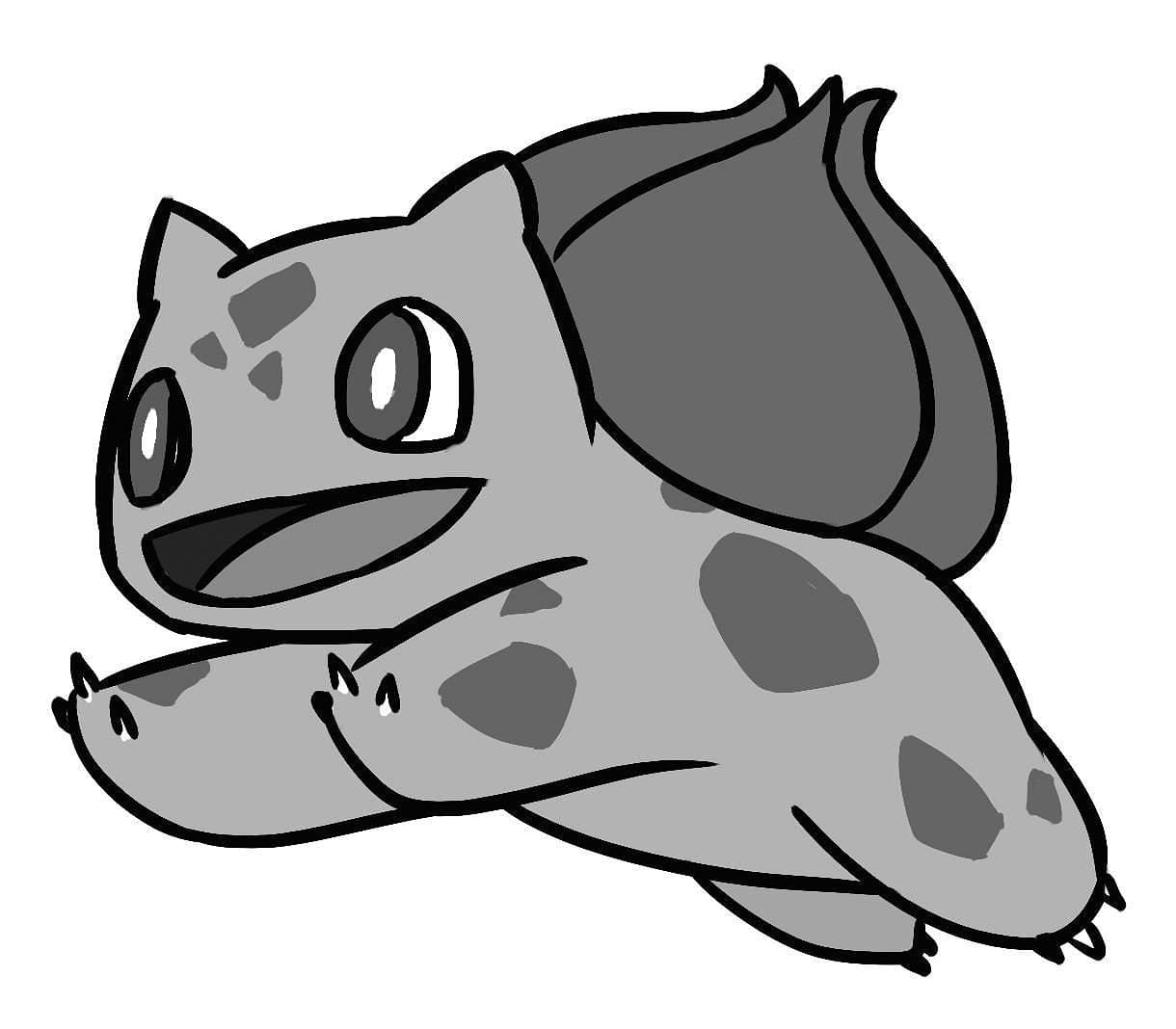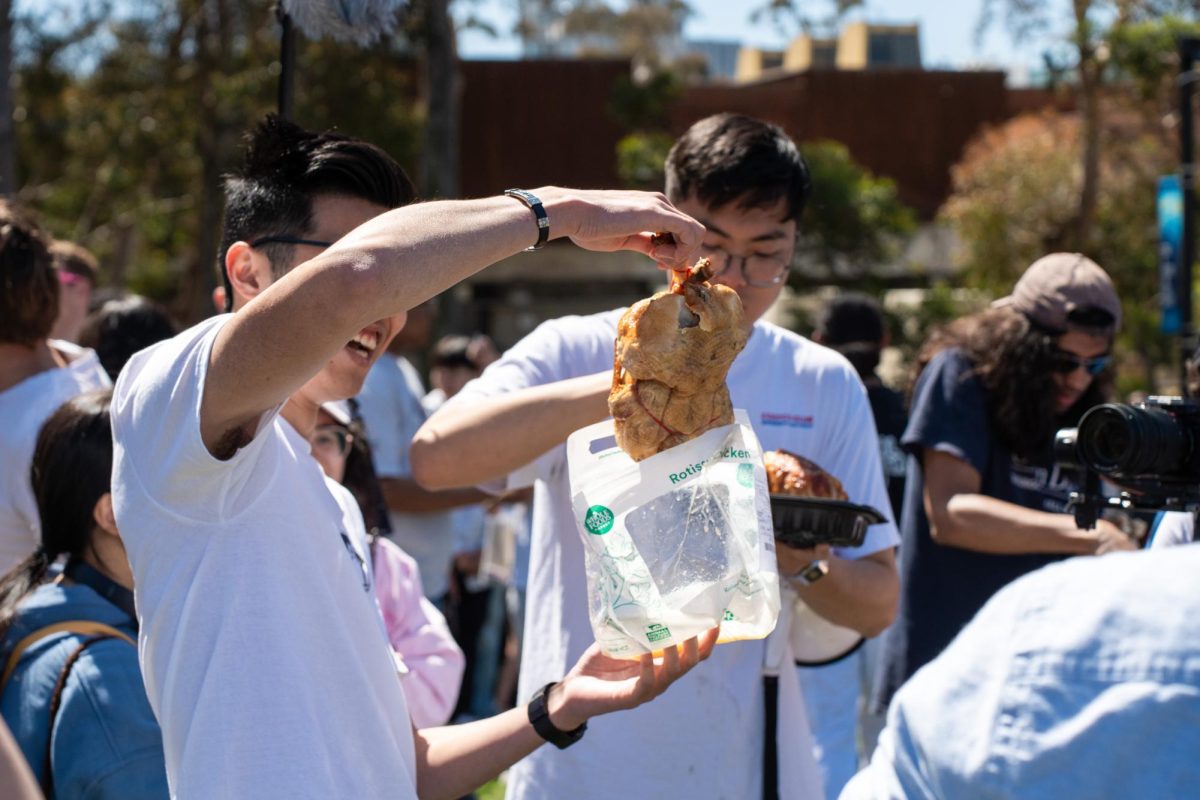UCSD is home to its very own Pokemon League — a group of diverse gamers that take Pokemon to another level. While some play the game casually, more competitive members go to recognized, national tournaments to claim the title of Pokemon Master. With the release of Pokemon: Omega Ruby and Alpha Sapphire, another competition presents itself for veterans and new players alike. With the Pokemon Regionals Video Game Championship coming up in February, the UCSD Guardian held an interview with Roberto Knapp Ramos, a competitive player who aspires to play in the VGC 2015 format.
Guardian: In the VGC 2015 format, what are some current metagame[1] threats that people are using?
Roberto: One popular strategy that is called “Terracott,” which is the combination of Terrakion[2] and Whimsicott[3]. Whimsicott uses “Beat Up[4]” on its partner to max its attack [but inflicting] damage. Then there are other Pokemon such as Thundurus[5], who has an ability called Prankster that gives its non-attacking moves priority, and Therian form Landorus[6], whose ability Intimidate lowers the attack of the opposing team. Sometimes you want to disrupt the other team, so you might use Fake Out which is commonly used on Pokemon like Mega[7] Kangaskhan[8] to flinch[9] them. These are just a few of the many common threats.
G: Is there anything that currently stands out right now? R: Contrary Serperior[10] was just released, who is really powerful. He has an attack called Leaf Storm that would normally lower [the Special Attack stat[11]], but its ability reverses it to increase your power. G: Can you discuss some of the play styles that people are using?
R: Rain is definitely popular, as it weakens fire attacks. However, people have stopped using Drizzle[12] Politoed[13] for manual rain setters such as Sableye[14] or Thundurus, who can set it up themselves. It really helps. People also use Mega Charizard Y over Mega Charizard X because of Drought[15], which allows you to run powerful moves like Solar Beam and Heat Wave in the sun. Then there is Trick Room[1] which good because you can destroy teams that rely on speed. You want a good yet slow settler who can attack and tank because they have to constantly set up Trick Room throughout the game.
G: What are some common ways to disrupt the opponent’s team?
R: There’s Fake Out, which flinches the target. Priority[2] moves are great, though sometimes the opponent will have moves like Quick Guard to block these moves. They’re not that common, however. Talonflame[3] is a good example, who has Gale Wings[4] to attack with Brave Bird and Acrobatics or assist its team with Tailwind[5].
G: What is more important: team match-up or skill?
R: Definitely a balance of both. It takes a lot of skill to anticipate and read your opponent while also executing your own strategy. But having a good team is really important.
G: What is one particular way to have a favorable match-up?
R: It can help to use underrated Pokemon that are out of the norm — the recent champion used a Pachirisu[6]. They won’t expect it, and it’s really fun to use your own creative things. However, it still takes skill. The guy facing the champion used a lot of good Pokemon but he was making a lot of poor moves that could be taken advantage of. So skill definitely comes into play.
G: What advice do you have for new, aspiring Pokemon trainers?
R: Try different teams and test them, then practice, which can take a lot of time. But make sure you have fun and catch them all!
[1] Metagame refers to the game universe and its environment. [2] Terrakion, the Cavern Pokemon, is a legendary Rock/Fighting type. [3] Whimsicott, the Windveiled Pokemon, is a Grass/Fairy type. [4] A move in which the user attacks multiple times in succession. [5] Thundurus, the Bolt Strike Pokemon, is a legendary Electric/Flying type. [6] Landorus, the Abundance Pokemon, is a legendary Ground/Flying type. [7] “Mega” stands for Mega Evolution, which allows a Pokemon to change during battle. [8] Kangaskhan, the Parent Pokemon, is a Normal type. [9] Flinching is a status condition that renders a Pokemon unable to attack for a turn. [10] Serperior, the Regal Pokemon, is a Grass type. [11] Pokemon have different stats, such as Special Attack and normal Attack. [12] Drizzle is an ability that summons Rain for five turns. [13] Politoed, the Frog Pokemon, is a Water type. [14] Sableye, the Darkness Pokemon, is a Dark/Ghost type. [15] Drought is an ability that summons harsh sunlight for five turns. [16] Trick Room is a move where slow Pokemon become fast for five turns. [17] Priority refers to moves that always go first. [18] Talonflame, the Scorching Pokemon, is a Fire/Flying type. [19] Gale Wings is an ability that gives Flying type moves priority. [20] Tailwind is a move that doubles the team’s speed for two turns. [21] Pachirisu, the EleSquirrel Pokemon, is an Electric type. It is normally considered weak.








